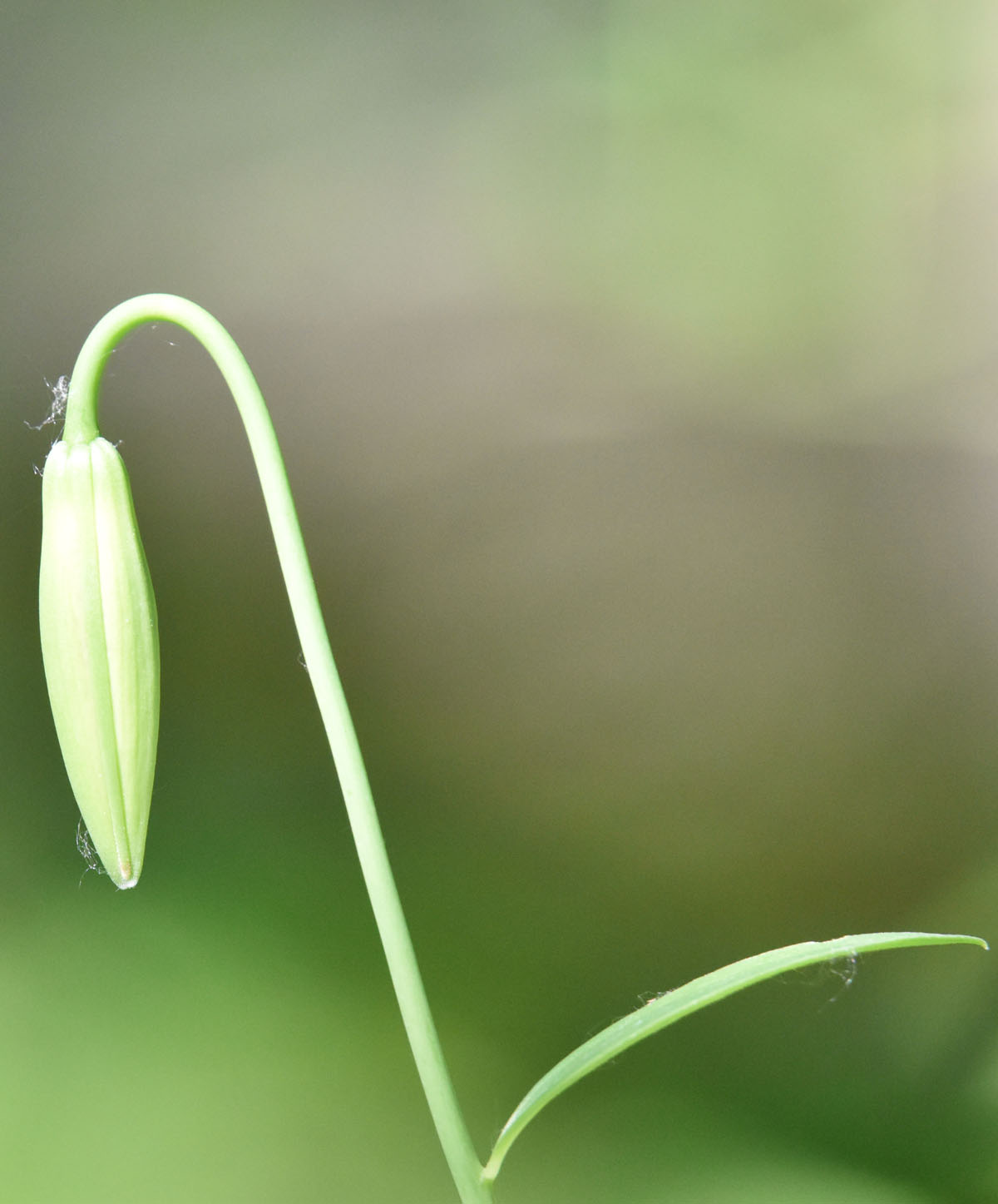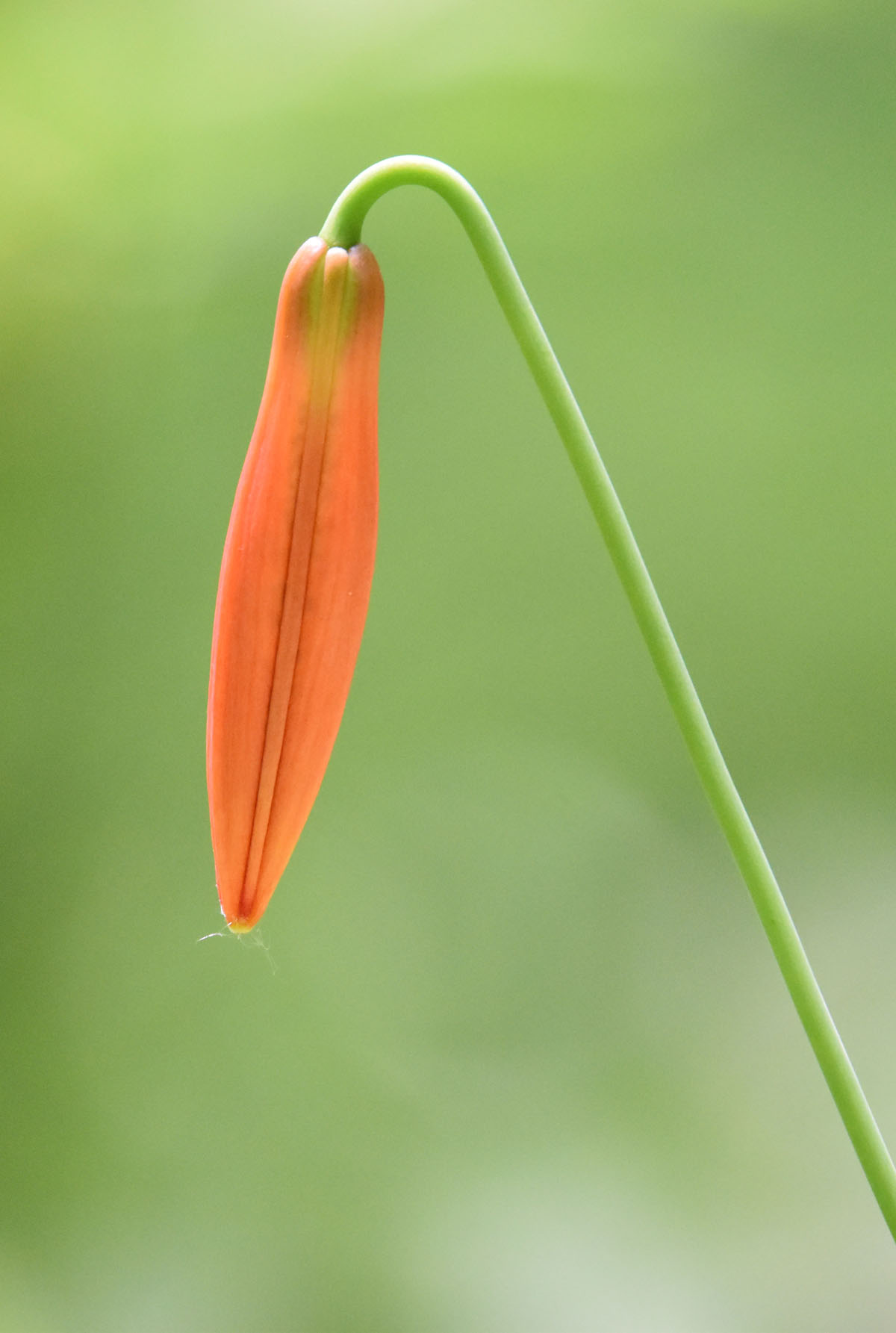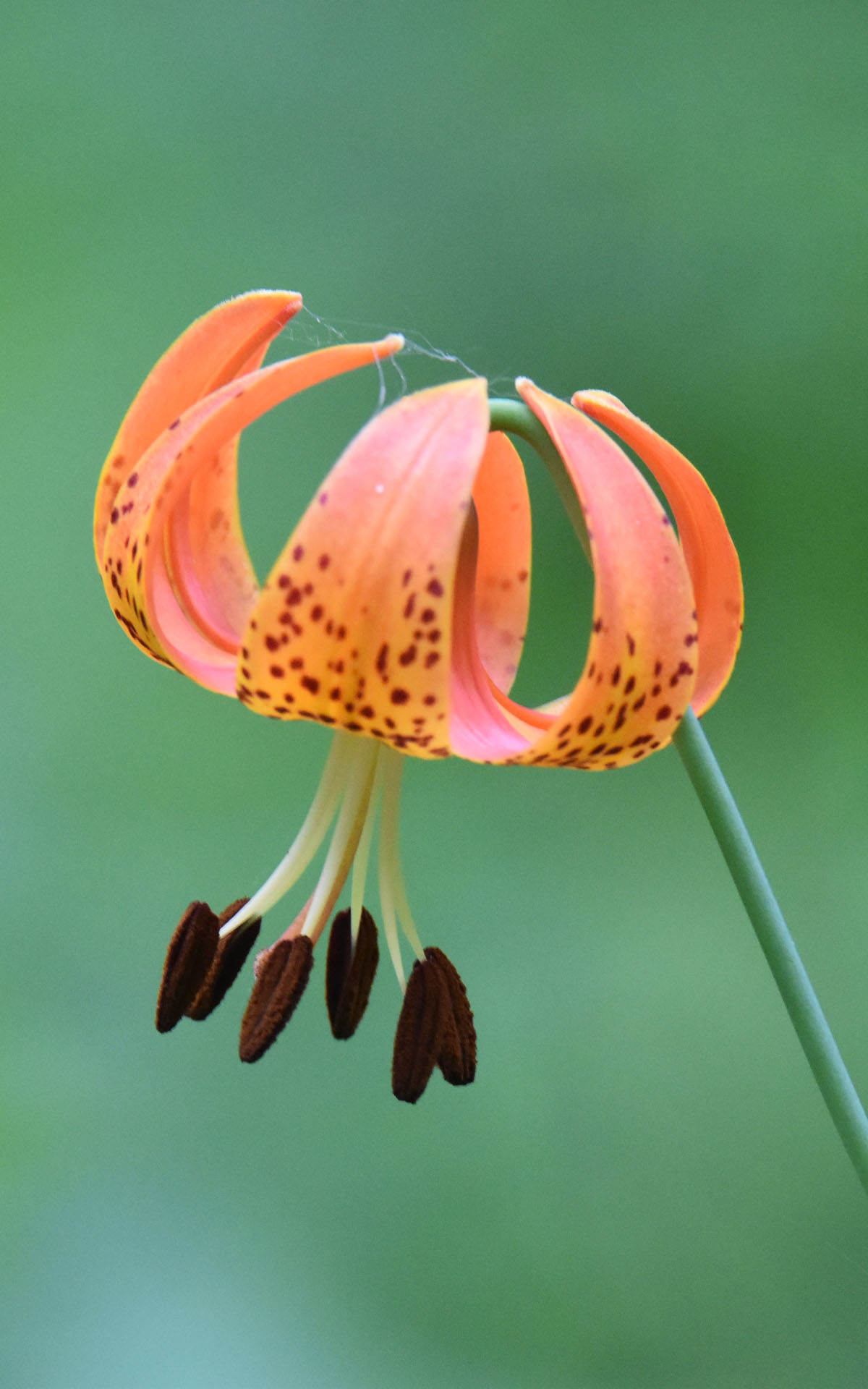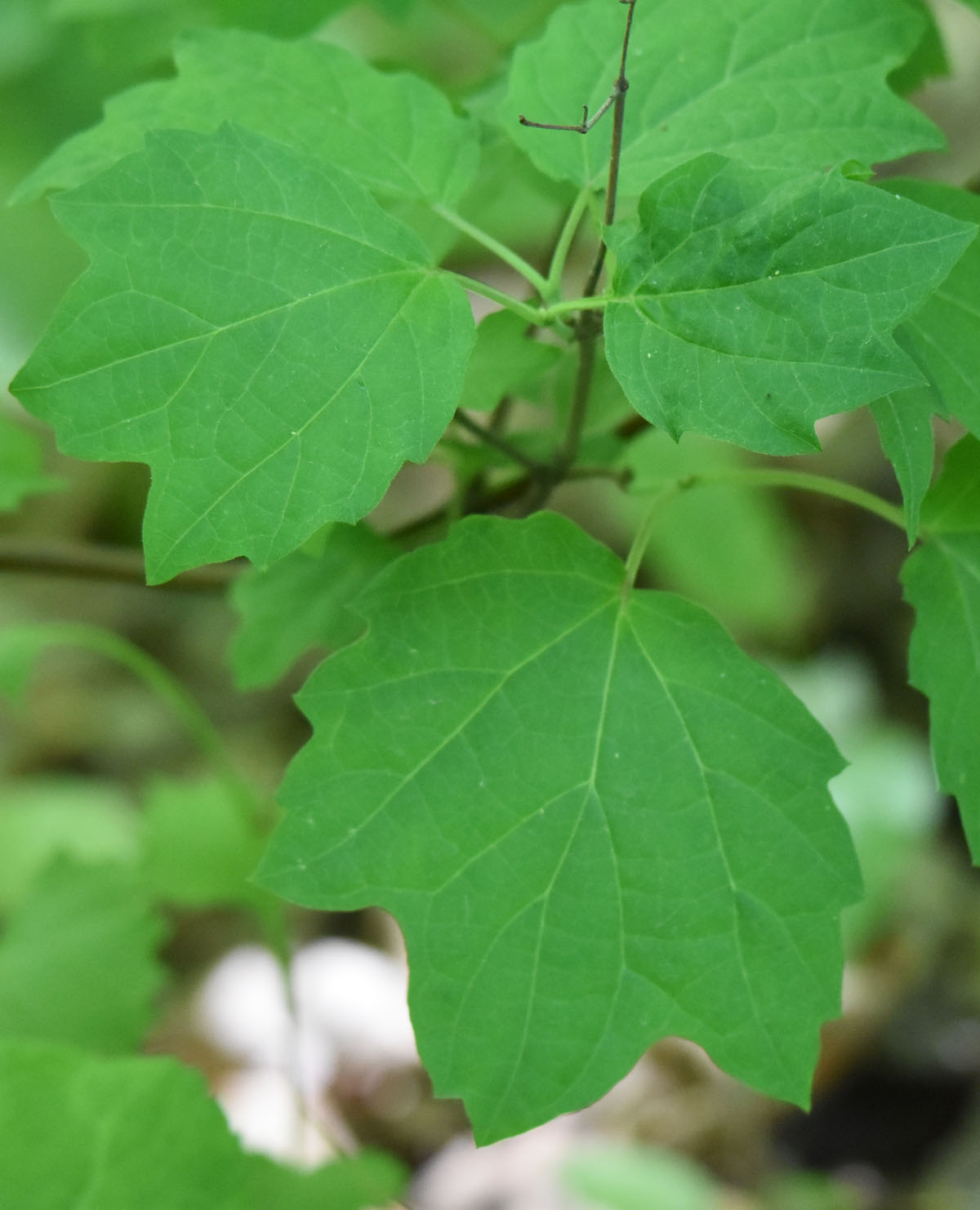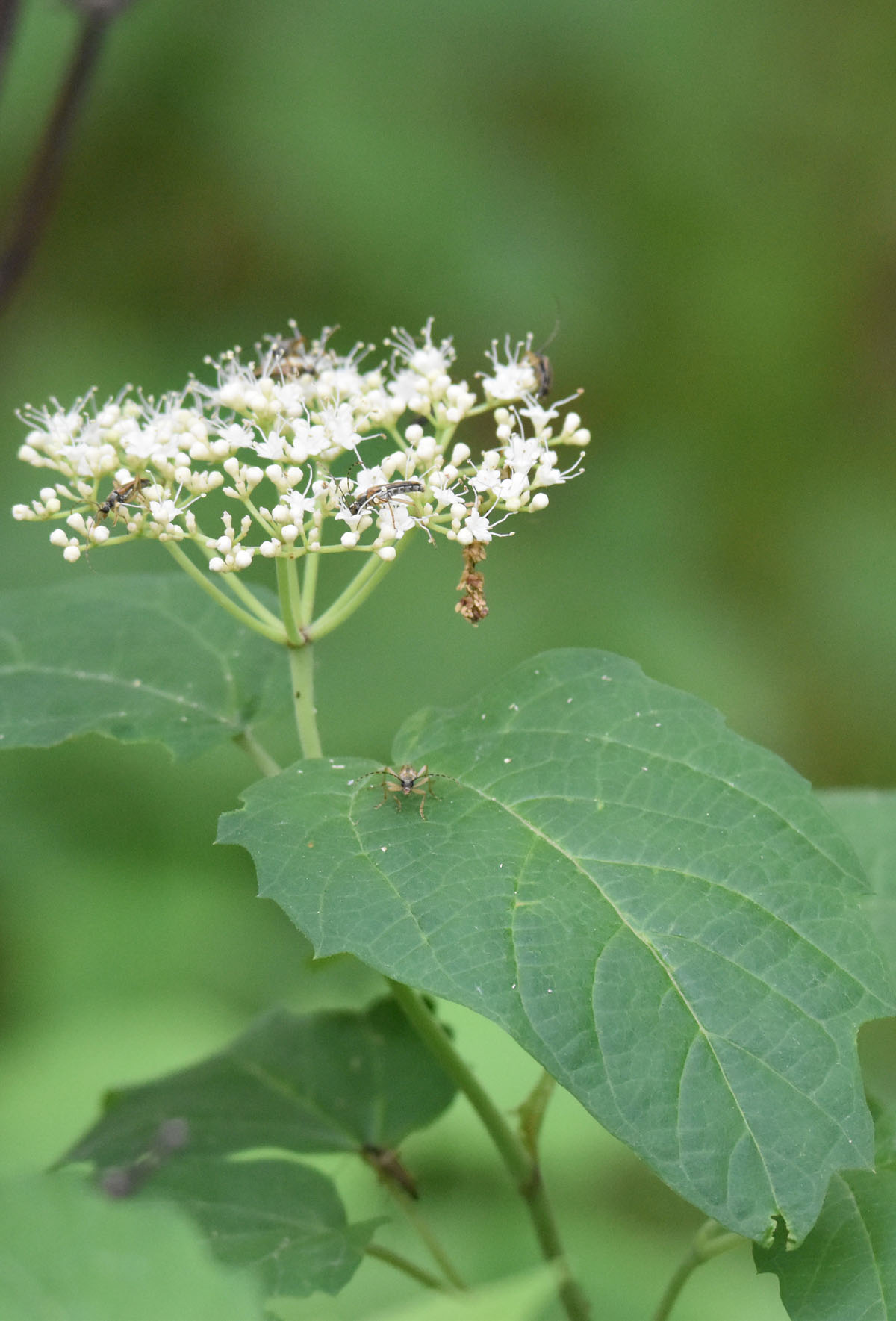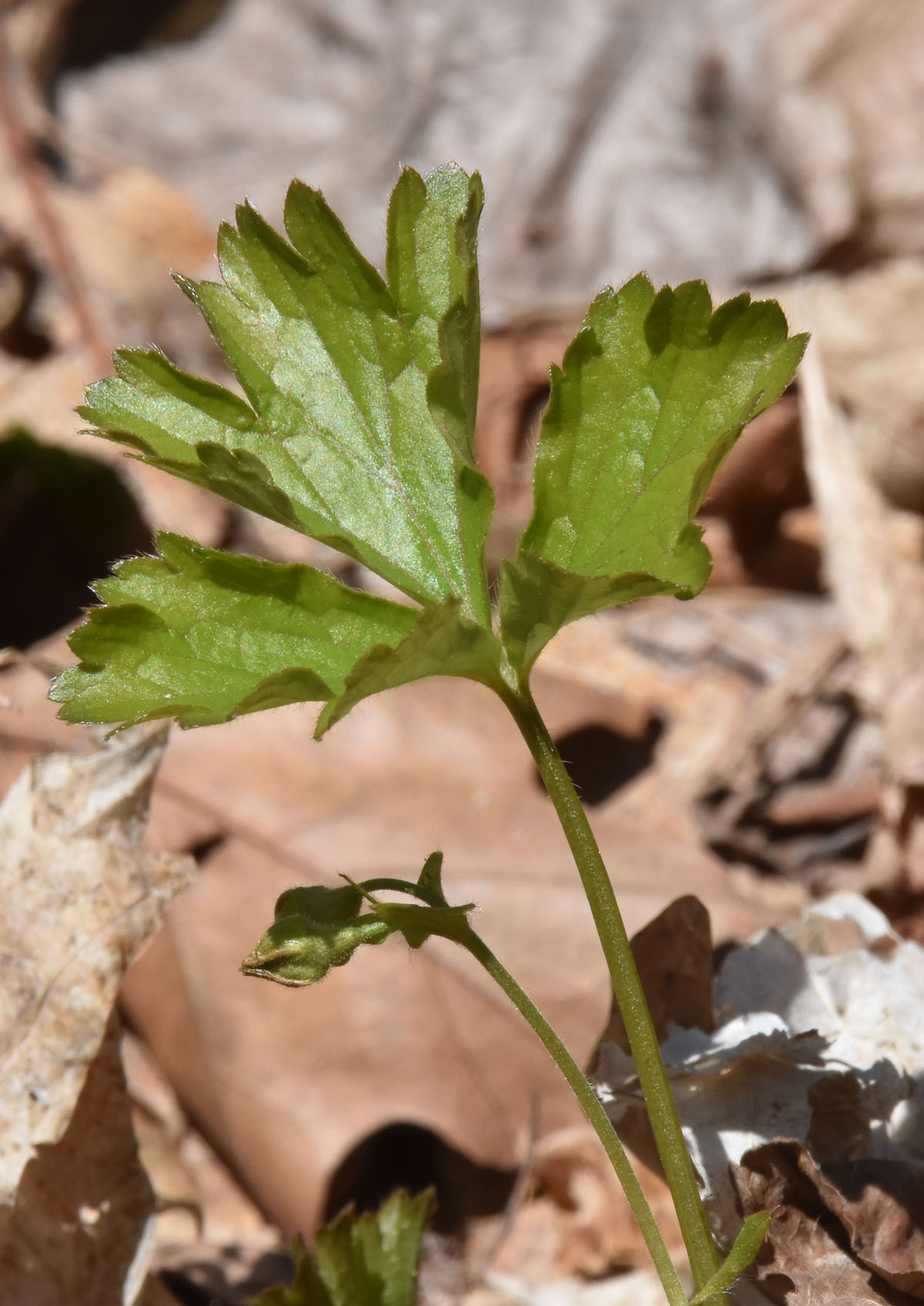My wandering walks are sometimes purposeful: A recent goal has been listing which plants grow in a nearby woodlot. Some surprises included Carrionflower and Kidneyleaf Buttercups. Sometimes I can’t be sure of an id until I see a plant flower or seed. Depending on the weather, I may miss a vital clue this year. That’s why when there was a brief break in the rain, I stopped at the park hoping to solve…
… The Mystery Lily of Winston Woods
Sounds like a good title for a Nancy Drew novel.
I was quite surprised to spot a huge lily bud right beside the trail in late June. When I investigated, I found only two lily stems and only one bud. I looped the entire small park again but did not see any other lilies. Most likely this was planted here as part of a restoration of native species–but it also could be a garden escape instead.
When I zipped back to the park a few days later, the bud had transformed into a gorgeous orange. But I still wanted more proof for my suspicions.
Finally on Canada Day I had proof. It is a Michigan Lily. And planted or fully wild, it was worth the suspense.
Not Every Maple Leaf Grows on a Maple Tree
A few plants, like Purple-flowering Raspberries, have leaves that look somewhat like maple leaves.At least those bushes are covered in prickles making id easy. This next plant is a little easier to miss when it grows under mature maple trees.
These are Mapleleaf Viburnums. The flowers which blossomed by June 9 are very un-maple-like.The seeds later this summer will be the clincher. But I’ve looked these up before and I’m confident already.
Not Every “Strawberry” Plant Bears Delicious Red Fruit
There are strawberry plants growing in my new park and some flowered this spring though I never saw the fruit. I suspect the chipmunks, squirrels and other creatures found them first. Another plant that looked vaguely like a strawberry still has fruit but no one seems interested!
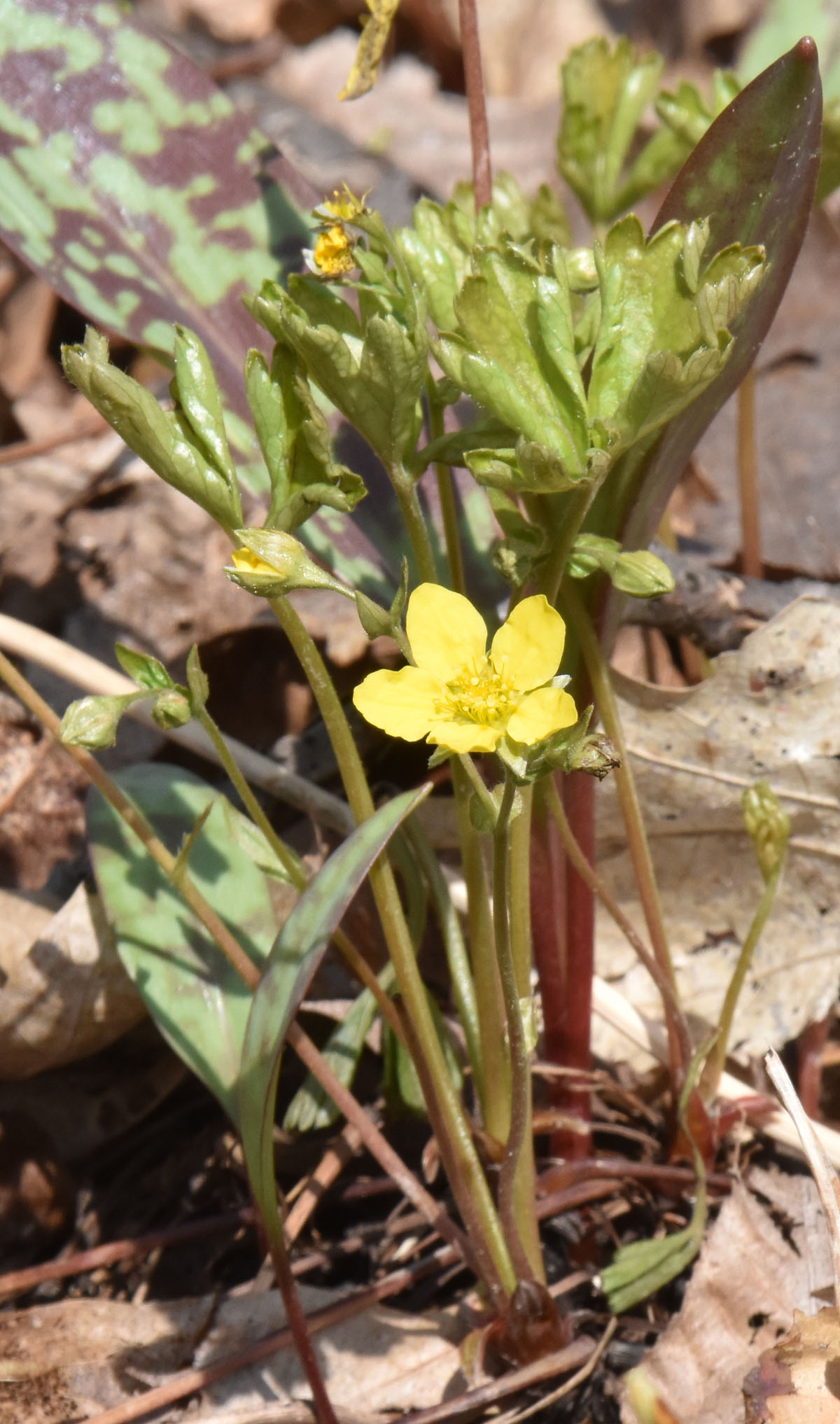
They were in bloom on May 5, a bit earlier than the real strawberries nearby.
When I first saw these chrome-yellow flowers I thought of Cinquefoil. The leaves, though, were three-parted and more like Strawberries. It didn’t take much detective work to find them in my field guides. Appalachian Barren Strawberries are not related to the plants we get the fruit from. Like the Mapleleaf Viburnum they are just named based on the way their leaves are shaped like more common plants.
I hope to find a few more interesting plants in the park as the summer swelters on.
Related Reading
- Some New (to Me) Spring Wildflowers in an Oakville Park
- What Is This Slender Pale Purple Tubular Flower with No Leaves?
- What’s This Tall Plant with Tiny Yellow Tube Shaped Flowers with 5 Petals and Long Stemless Leaves Growing Beside the Path in the Woods in Southern Ontario?
Join In
Have you seen any interesting lilies in your neck of the woods? Please share your sighting with a comment.

